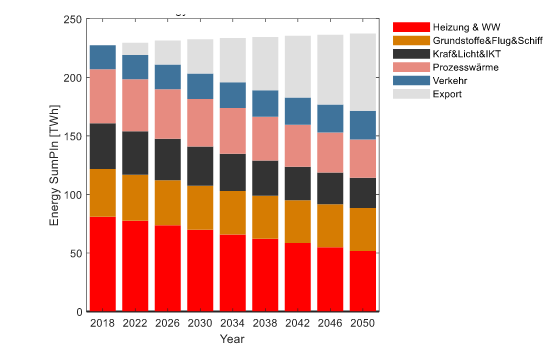Pressemitteilung
ISFH-Studie zeigt: Niedersachsen braucht bereits 2030 deutlich mehr grünen Wasserstoff
Für eine erfolgreiche, klimaneutrale Transformation des niedersächsischen Energiesystems sowie der niedersächsischen Industrie bis zur Mitte des Jahrhunderts, muss Niedersachsen deutlich mehr grünen Wasserstoff produzieren, so die aktuelle Studie des Instituts für Solarenergieforschung (ISFH) in Kooperation mit der Leibniz Universität Hannover. Allein in Niedersachsen liege der Bedarf an Wasserstoffproduktionsleistung im Jahr 2030 deutlich höher als die Nationale Wasserstoffstrategie für ganz Deutschland vorhersieht.
Konkret kommt die „Simulative Kurzstudie zum Einsatz von Wasserstofftechnologie in Niedersachsen“ (SiKuWa) zu dem Ergebnis, dass Niedersachsen mindestens 13 Gigawatt Elektrolyseleistung für die Eigenproduktion von Wasserstoff benötigt. Dieser Schluss steht im starken Kontrast zu den fünf Gigawatt, die in der Nationalen Wasserstoffstrategie für Gesamtdeutschland im Jahr 2030 prognostiziert wurden. Die zukünftige Elektrolyseurleistung innerhalb Deutschlands hat enorme Konsequenzen auf die Versorgungssicherheit und Kostenreduzierung von grünem Wasserstoff.
Eine zentrale Rolle für die Produktion von grünem Wasserstoff spielt der Ausbau erneuerbarer Energiequellen. Die Studie berücksichtigt aktuelle gesellschaftliche Akzeptanzprobleme von Onshore-Windkraftanlagen und Dachflächenlimitierung bei Photovoltaikanlagen. Damit aber ausreichend Energie allein für die inländische Produktion von grünem Wasserstoff in Niedersachsen bereitstehe, sei insbesondere für Windkraftanlagen ein Ausbau mindestens bis zur gesetzten Leistungsgrenze von 20 Gigawatt in 2030 notwendig, bei gleichzeitig starkem Ausbau der Solarenergie.
Eingesetzt werden sollte der grüne Wasserstoff vor allem, um die Grundstoff- und Chemieindustrie zu dekarbonisieren, sowie in Wasserstoffkraftwerken. Für den Gebäudesektor und Individualmobilität spielt Wasserstoff dagegen laut Studie keine bis eine untergeordnete Rolle. Durch den Einsatz von Wärmepumpen und batterieelektrischen PKW stünden bereits deutlich energieeffizientere Technologien zur Verfügung, die eine schnellere und kostengünstigere Treibhausgasemissionsreduktion ermöglichten.
Die Studie wurde mit Mitteln des Niedersächsischen Ministeriums für Umwelt, Energie, Bauen und Klimaschutz gefördert. Nachlesen können Sie die Studie beim ISFH.

Impressum
.
Datenschutzerklärung
Bleiben Sie informiert – mit unserem Newsletter „NWN direkt…“
Sie möchten über diese und andere spannende Wasserstoff-Projekte aus Niedersachsen informiert bleiben? Dann melden Sie sich bei unserem Newsletter an!
